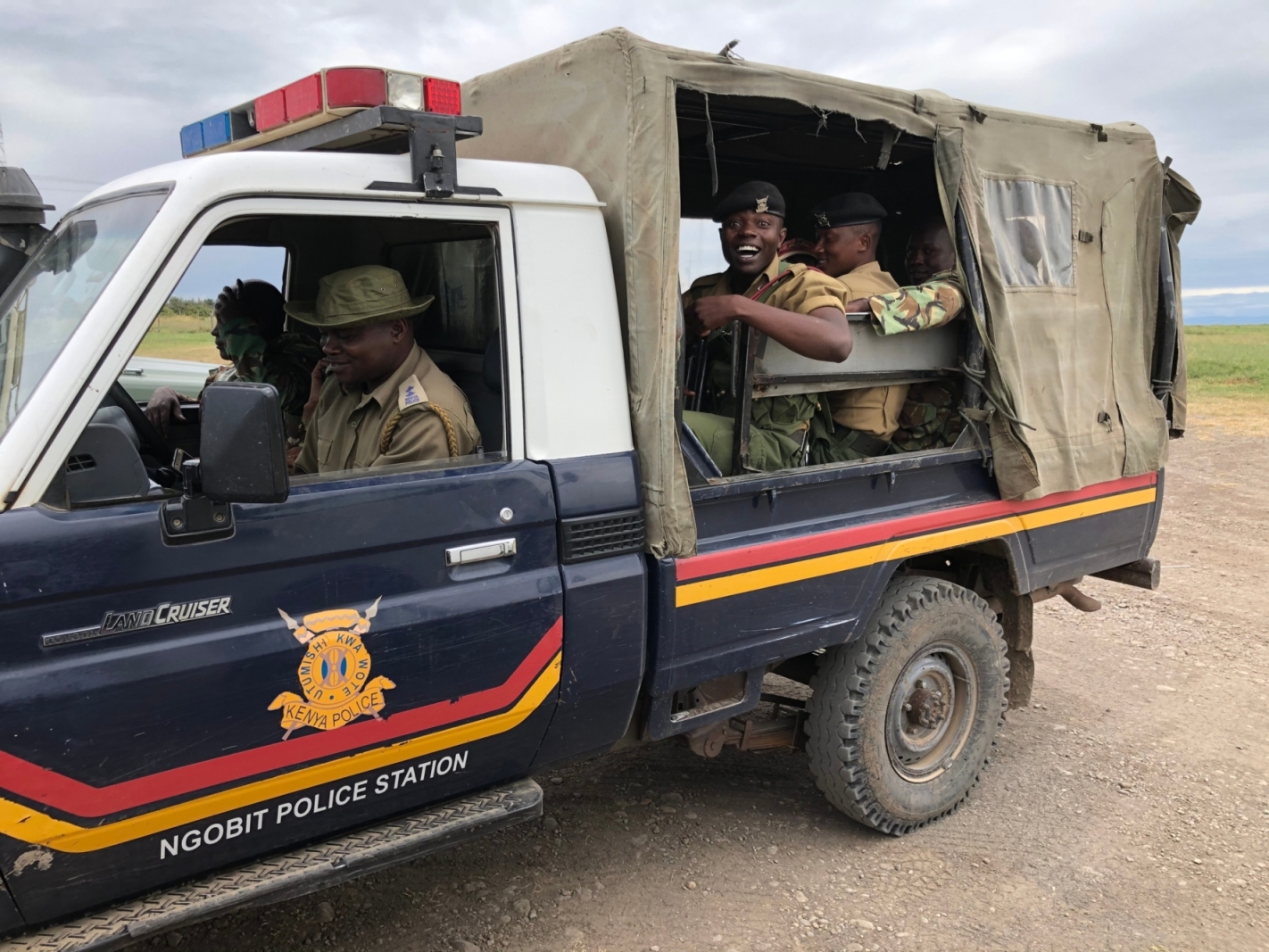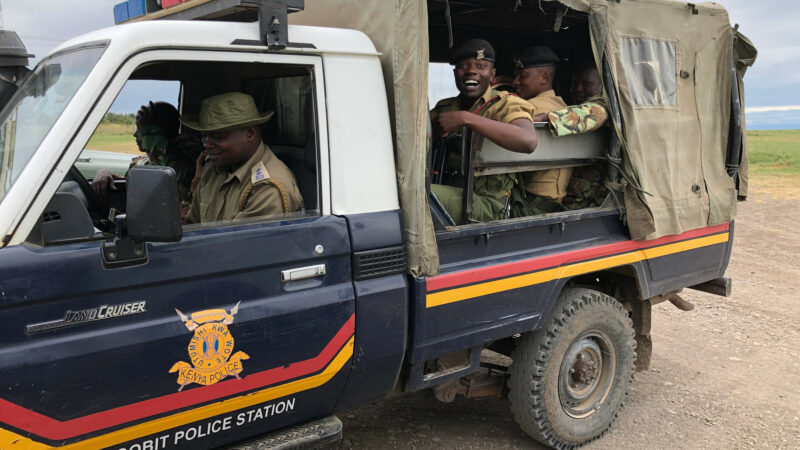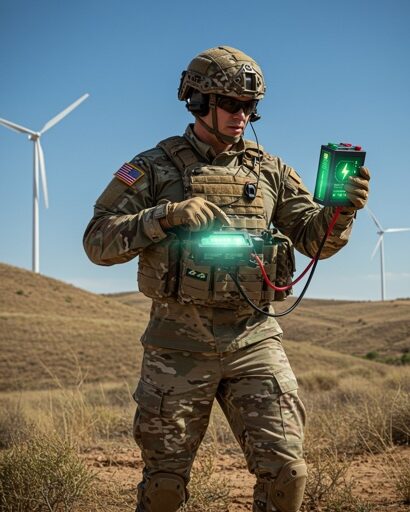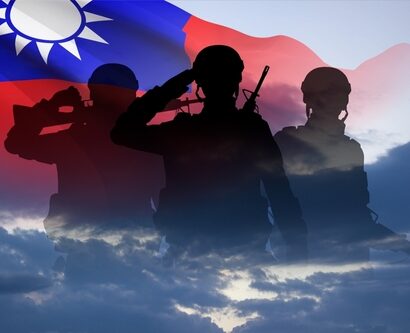Abstract: To curb insecurity and sporadic armed conflict in regions inaccessible to state security forces, the government of Kenya advocates for Community Policing Groups (CPG), which exercise authority in rural, arid, and semi-arid areas. The state deems CPGs a necessary establishment akin to an extension of its autonomy to exercise the use of force. Consistently, CPGs are comprised of parties like the Local Peace Committees (LPC), Nyumba Kumi Initiative (NKI), Kenya Police Reservists (KPR), and Macawisley. In the past, they were deemed essential establishments because of insecurities and sporadic conflicts such as cattle raiding, violent extremist recruitments, and terror attacks in afflicted regions. However, despite CPGs, terror attacks, forced disappearances, and extrajudicial killing are still active in NEP and Coastal Region hotspots. Said hotspots include Hulugo, Liboi, and Ijara in Garissa County, Konton, Khorof Harar in Wajir East, Diif, and Gherille in Wajir South, Hindi, Bargoni, Faza, and Hongwe in Lamu, as well as Nyali, Kisauni, Mvita, and Likoni in Mombasa. In Kenya, especially in towns that border Somalia, a heavily encrypted platform is needed for community members to submit reports confidentially. It keeps their identities anonymous so they can share details of any human rights violations, sporadic conflicts, or suspicious behaviors. It is a viable system for two reasons: (1) it is an extension of the state’s autonomy and its legitimate use of force, and (2) it is a request advocated for and supported by community members. This platform would act as a correction, monitoring, and accountability mechanism for community members while improving community and state relations. The state would benefit from reducing risk and security threats in areas that are difficult to access. Moreover, an Ombudsman has to investigate the complaints submitted to their platform and present the reports to state authorities, all while maintaining anonymity after validating those complaints. This will bring accountability and justice to the affected individuals and their communities.
Problem statement: How can the existing threats and prolonged insecurity in the North Eastern Province (NEP) and Coastal Region of Kenya be assessed? What are the options for protective mechanisms for affected communities?
Bottom-line-up-front: Despite the insecurities and imminent threats in NEP and the Coastal region, community members are quite responsive and willing to bridge the gap between state security forces and their communities. This willingness to comply with security forces to curb insecurity, such as violent extremism, is crucial for policymakers to consider.
So what?: Creating a platform with heavily encrypted technology would provide civilians a space to submit complaints and reports of incidents without the state or any non-state actors capturing their identity. Thus, confidentiality is guaranteed for whistleblowers, along with their identities being protected from all parties. Regarding the validity of submitted reports on the platform, a state Ombudsman would have the expertise and access to an independent authority to analyze and submit reports to the state. This platform would work online and offline, and civilians could access it without needing the internet.

Source: shutterstock.com/Diane J Payne
The Need for Community Policing Groups
Recently, conflicts in East Africa have expanded beyond inter-clan, pastoralist, and inter-ethnic violence into political tensions and terrorist attacks. To mitigate that, the incumbent government declared Community Policing Groups (CPGs) to be a necessary establishment.
Unsurprisingly, security is the main challenge in Somalia and Kenya’s towns. What exacerbates the situation is the geopolitical location of the North Eastern Province (NEP) and Coastal region, lack of border controls, and weak security infrastructure. Consequently, issues such as pastoralist conflicts, violent extremist recruitments, and terror attacks are common in the stated regions.
What exacerbates the situation is the geopolitical location of the North Eastern Province and Coastal region, lack of border controls, and weak security infrastructure.
Cattle rustling and pastoralist conflict have been persistent issues in the Horn of Africa that in the past often worsened with droughts. In northern Kenya, the occurrence of droughts meant that there had been a surge in cattle rustling, targeted towards vulnerable communities where cattle was quite often the only source of income. Cattle raiding in 2017 and 2018 was characterized by high-intensity conflicts that left dozens killed or maimed, negatively affecting the region’s human security and development[1]. In Kenya’s West Pokot and Elgeyo-Marakwet counties, 30 people were killed during the first five months of 2019[2].
Cattle are the primary source of income for millions of nomadic pastoralists in Africa[3]. The impact of cattle rustling on marginalized communities is severe, deprives neighborhoods of their livelihoods, and increases poverty[4]. If it is not catered to, it creates a gap for extremist groups like Al-Shabaab (AS) to exploit the grievances of pastoralists by underlining the ineffectiveness of the government and state security forces. Furthermore, these grievances are worsened because breadwinners are often injured or killed in raids[5]. This fuels counterattacks and creates a vast disconnect from the state’s legitimate use of force.
According to Adan Garad, executive director of the Wagalla Centre for Peace and Human Rights, livestock theft has been ongoing in all the pastoral districts of Wajir, Moyale, Marsabit, and Sabarwawa.[6] “Cases of cattle rustling are growing in these areas, and we have received numerous cases from affected pastoralist communities. In the past, the communities practiced cattle rustling as their culture permitted it. But now people are using cattle rustling to restock back on what they lost to prolonged droughts,” Garad said.[7]
Cases of cattle rustling are growing in these areas, and we have received numerous cases from affected pastoralist communities. In the past, the communities practiced cattle rustling as their culture permitted it. But now people are using cattle rustling to restock back on what they lost to prolonged droughts.
In Kenya, both men and women are actively sought after by AS to incite and recruit youth. In Majengo, it was reported that a female recruiter was well known for targeting youths – young men in particular – to join AS with the promise of jobs[8]. This indicates that the high unemployment rates among Kenyan youth create a lucrative gap for VE recruiters to exploit.
Unfortunately, a large percentage of the youth population in Kenya feels marginalized from access to socio-economic opportunities, political representation, and participation. This is concerning, as unemployment, marginalization, and exclusion are the drivers for VE recruitment. Moreover, the 2019 population census results revealed that 75% of the 47.6 million population was under 35, creating what is known as the ‘youth bulge’.[9]
In a survey conducted in 2016, unemployment was the top concern that the youth wanted the government to address at 63%, and lack of access to capital at 11 percent[10]. The most trusted institution was the family (94%), followed by religious organizations at 86 percent[11]. To note, when it comes to Violent Extremism (VE), research shows that the rationales individuals give for participating in violent acts are as diverse as the individuals themselves[12]. VE groups provide a powerful justification for political violence by framing local grievances into an extremist global narrative, which predisposes at-risk young people to radicalization[13].
With that in mind, authorizing the use of force by CPGs is a strategy by the government to extend its legitimacy through traditionally embedded policing systems, which is evident in the counties that border Somalia (i.e., Garissa, Wajir, Mandera, Lamu).
Regarding security, Kenya has played an active role in the international arena. Over the last few decades, Kenya has participated in United Nations peacekeeping missions by contributing to peacekeeping forces in Africa, including missions to Darfur, the Democratic Republic of Congo, South Sudan, Somalia, Mali, and Liberia[14]. The purpose of peacekeeping efforts is to help governments navigate peace in conflict zones. Although Kenya’s role in peacekeeping has been to contribute to peace operations, it does not have an enforcement element[15]. Actually, Somalia is the exception.
“Peacekeeping forces want to be perceived as ‘good’ with the purpose of helping the population in the same way that governments want to be perceived as a legitimate and fair state power, enforcing law and order for the local communities, but VEOs/insurgents try to skew that perception and represent the government/military force as an unfair entity, oppressing the people. Whoever gains popular support gains the upper hand.”
Defence Attaché, Danish Embassy in Kenya
Differently put, CPGs were created to make policing more effective and communities more secure[16]. They are based on the recognition that state security forces will be much more successful in carrying out their operations in protecting communities if they have the support of the public[17]. By enlisting the public’s cooperation, the police wishes to receive more accurate information about crimes such as illicit trade, pastoral and interclan conflicts, radicalization and terrorist activities, and gang violence[18]. These CPGs aim to integrate local leadership with the government system to ensure sustainable security in areas the government cannot influence.
CPGs are perceived to be quite credible as agencies by community members since participants are selected by the Area Chiefs of each county. These Area Chiefs are also elected by community members so their authority and representation are held to be reliable and credible by the community. The result of that is that CPGs have become a relatively effective tool in maintaining peace and delivering trustworthy information to the government.
Local Peace Committees and Nyumba Kumi Initiative
Kenya realizes that cooperation with communities increases the reliability and trust with state security forces by assisting them in performing their duties more effectively. Moreover, CPGs are a concept that existed in Africa long before decolonization. An example is Local Peace Committees (LPCs), which existed in Kenya as a group of elders who worked to mitigate and resolve land and pastoralist conflicts. It later expanded to include family conflicts, such as inheritance and divorce, and was gradually supported by the state as a form of customary law[19]. On the other hand, the Nyumba Kumi Initiative (NKI) was established recently in light of the increased levels of radicalism and recruitment of extremist groups. The term “Nyumba Kumi” is derived from a Swahili phrase that translates into “ten households” and represents a group that works as a mechanism of community surveillance[20].
An example is Local Peace Committees, which existed in Kenya as a group of elders who worked to mitigate and resolve land and pastoralist conflicts. It later expanded to include family conflicts, such as inheritance and divorce, and was gradually supported by the state as a form of customary law.
Kenya Police Reservists and Macawisley
The creation of the Kenya Police Reservists (KPRs) was also authorized by the government and existed in arid and semi-arid areas in the North Eastern Province and some areas in Coastal Kenya[21]. KPRs operate in hotspot areas that the national police cannot access. These areas include Hulugo, Liboi, and Ijara in Garissa, Konton, Khorof Harar in Wajir East, and Diif and Gherille in Wajir South, Hindi, Bargoni, Faza, and Hongwe in Lamu, as well as Nyali, Kisauni, Mvita, and Likoni in Mombasa. The hotspots are known for gang violence, excessive drug abuse, pastoralist conflict, terror attacks, radicalization, and AS recruitment. KPRs are trained and paid by the government of Kenya, and communities trust and relate more to them than to state security forces for protection.
Another CPG is known as Macawisley. This group works in counties demographically populated by predominantly Kenyan-Somalis, such as Wajir, Garissa, and Mandera in North Eastern Province (NEP). The purpose of this CPG is similar to that of KPRs, to prevent inter-clan conflict, and curb terrorism and radicalization. The process of selecting a member of Macawisley is authorized by the national government and processed by the Chief in each village. Furthermore, the name Macawisley is derived from the Somali term “Macawis”, a traditional cloth for men.
Interestingly, the item of clothing serves two purposes: (1) representing identity and (2) assisting in hiding weapons that protect the community. The disadvantage of Macawisley is that they are only recognized by a few in the government security hierarchy and the eyes of the community. They are also branded as clan militias that only protect specific land or areas belonging to specific clans or tribes.
Unfortunately, terror attacks, forced disappearances, and extrajudicial killing are still active in NEP and Coastal Region hotspot areas. In early 2022, AS claimed responsibility for Improvised Explosive Devices (IED) attacks in Mandera, Garissa, Wajir, and Lamu border towns. The IEDs targeted the Kenya Defence Forces (KDF), followed by two people who were picked up during mid-day and one killed before sunrise in the Garissa sub-county. This exacerbated inter-clan tensions with blame and uproar, leading to national intervention and curfew enforcement for 30 days starting on March 23. The community blamed their rival sub-clan for killing a member of their tribe.
In early 2022, AS claimed responsibility for Improvised Explosive Devices attacks in Mandera, Garissa, Wajir, and Lamu border towns. The IEDs targeted the Kenya Defence Forces, followed by two people who were picked up during mid-day and one killed before sunrise in the Garissa sub-county.
Perspectives of Community Members
Broadly speaking, communities located in rural or hotspot areas in Kenya trust and rely on CPGs for safety and security. When asked which groups they rely on for their security and protection, a majority of community members in NEP and the Coastal Region responded verbatim to either the national police or community leaders:
- “We feel more comfortable relying on our community leaders because we are the ones that selected them and put them in charge. We believe they won’t let us down.” – NEP, Religious Leader
- “We rely on the national police mostly because they are easily accessible to us and are friendly” -NEP, Gender Champion
- “Our community leaders are doing a good job at holding things together. They know what we want and how we want it, so they are our first choice to rely on.” – NEP, Youth
- “National policebecause they are accessible to us and we don’t need to seek permission to go to the station.” – Lamu, Religious Leader
When asked about which community members feel most intimidated by state security forces, the majority of respondents stated that women and youth were the most vulnerable groups:
- “Women, children, youths are most vulnerable. This is because women can’t run away like men whenever there’s brutality and violence”– NEP, Businesswoman
- “Women and youths mostly. They are usually mishandled every time an arrest is being made either to them or their family members. You can’t just watch when your child or parent is being mishandled and you will find those groups of people raising their concerns which leads them to being mishandled.” – Coastal region, Religious Leader
- “Young people and Muslim populations are most vulnerable. They fear being victimized because police like to profile young people with crime and Muslim populations with terrorist activities”– Coastal region, Clan Elder
- “Herders because they have no identity cards and they only speak their mother tongue. They are not level-headed people so they end up being irritable when questioned by security forces” – NEP, Clan Elder
State Ombudsman
The word Ombudsman is a Scandinavian concept that means representative. An Ombudsman has to investigate the complaints submitted to their platform. After validating those complaints, the Ombudsman then presents the reports to state authorities while protecting the identity of those who submitted the complaints[22]. This will bring accountability and justice to the affected individual or community.
As a concept, Ombudsmanship is not new to Africa. Traditional versions of a similar system existed even before the colonial era. Examples include the concept of Ubuntu, which can best be described as a philosophy that emphasizes ‘being self through others’. It is a form of humanism that can be expressed in the phrases ‘I am, because of who we all are’ and ubuntu ngumuntu ngabantu in the Zulu language[23]. Nowadays, a modernized and contextualized State Ombudsman system is needed. In Kenya, especially in the towns that border Somalia, this Ombudsman should take the form of a heavily encrypted platform for community members to confidentially submit reports of conflicts and human rights violations. This means that their identity will remain anonymous.
Traditional versions of a similar system existed even before the colonial era. Examples include the concept of Ubuntu, which can best be described as a philosophy that emphasizes ‘being self through others’.
A discussion with a young social activist from NEP expressed the challenges and needs of community members in Wajir County. After stating that his community is often stuck between a rock and a hard place, he also explained that state security forces and CPGs response to Violent Extremist (VE) activities compromise their identity and safety. Indeed, community members who complain are often killed by AS or profiled and interrogated by state security forces.
A heavily encrypted platform where community members can report illegal activities or incidences of violence without the fear of being killed or tortured could help reduce fears and insecurity across Kenya. The Ombudsman’s role would be to monitor and validate the reports sent on the platform.
This is a viable system for two reasons: (1) it is an extension of the state’s autonomy (2) it is a request advocated and supported by community members. Furthermore, the platform would act as a mechanism of correction, monitoring, and accountability for community members, while improving community and state relations. The state might also benefit from reducing risks and security threats in areas they cannot access efficiently.
Ruqaya has worked with several Non-Government Organizations (NGOs) and Intergovernmental Organizations (IGOs) on several stabilization and development programs in Somalia and Kenya. She has co-authored publications covering issues in the Horn of Africa, the Middle East, and the United States (US). Having obtained a Bachelor of Arts in International Affairs from Qatar University, Ruqaya acquired her Master’s Degree in International Relations at the United States International University (USIU – Africa in Nairobi).Aden is a Researcher and has worked in Northeastern and Coastal Kenya in programs such as NIWETU, BRICS, and CREATE by Conducting and Disseminating research findings at national, county, and community levels. He has advised on research methodologies. Aden has mentored young researchers in Garissa, providing connections and referrals to young individuals at risk of radicalization by available social service providers. Aden has Bachelor’s Degree in Development Studies (Social Science) from Mount Kenya University – Kenya. The views contained in this article are the author’s alone and do not represent the views of ACTRI.
[1] Duncan E Omondi Gumba, “Cattle rustling: from cultural practice to deadly organised crime,” Institute for Security Studies (February 28, 2020), last accessed July 14, 2022, https://issafrica.org/iss-today/cattle-rustling-from-cultural-practice-to-deadly-organised-crime.
[2] Idem.
[3] “Status of Drought across the Eastern Horn of Africa 2020 – 2022 Period (May 03, 2022),” Relief Web, May 05, 2022, last accessed July 14, 2022, https://reliefweb.int/report/ethiopia/status-drought-across-eastern-horn-africa-2020-2022-period-3rd-may-2022.
[4] Idem.
[5] George K. Kaimba, Bernard K. Njehia, and Abdi Y. Guliye, “Effects of cattle rustling and household characteristics on migration decisions and herd size amongst pastoralists in Baringo District, Kenya,” Pastoralism: Research, Policy and Practice 1, no. 1 (2011): 1-16.
[6] Idem.
[7] Idem.
[8] Irene Ndungu and Uyo Salifu, “The role of women in violent extremism in Kenya,” Pretoria: Institute for Security Studies (2017).
[9] Justin Yifu Lin, “Youth Bulge: A Demographic Dividend or a Demographic Bomb in Developing Countries?,” World Bank Blogs,January 05, 2012, last accessed June 22, 2022,https://blogs.worldbank.org/developmenttalk/youth-bulge-a-demographic-dividend-or-a-demographic-bomb-in-developing-countries.
[10] The Aga Khan University, “The Kenya Youth Survey Report 2016,” last accessed June 27, 2022, https://www.aku.edu/eai/Pages/kenya.aspx.
[11] Idem.
[12] J. Scott Carpenter, Matthew Levitt, Steve Simon and Jason Zarate, “Fighting the Ideological Battle,” Washington Institute (2010), last accessed June 22, 2022, https://indianstrategicknowledgeonline.com/web/Missing%20Link%20in%20U.S.%20Strategy.pdf.
[13] Idem.
[14] Ministry of Defence, “Kenya’s Peace Keeping Missions”, last accessed July 02, 2022, https://mod.go.ke/kenyas-peace-keeping-missions/.
[15] Idem.
[16] United Nations Peace Operations, “Community-Oriented Policing in United Nations Peace Operation,” New York (2018), last accessed June 27, 2022, https://police.un.org/sites/default/files/manual-community-oriented-poliicing.pdf.
[17] Eric Mutisya Kioko, “Conflict resolution and crime surveillance in Kenya: local peace committees and Nyumba Kumi,” Africa Spectrum 52, no. 1 (2017): 3-32.
[18] United Nations Police, n.d. “Community-Oriented Policing,” last accessed June 27, 2022, https://police.un.org/en/community-oriented-policing.
[19] Idem.
[20] Idem.
[21] Kennedy Mkutu Agade, “Changes and challenges of the Kenya Police Reserve: the case of Turkana County,” African Studies Review 58, no. 1 (2015): 199-222.
[22] Emile Francis Short, “The development and future of the ombudsman concept in Africa,” in: The International Ombudsman Yearbook, Volume 5 (2001), 56-72. Brill Nijhoff, 2002.
[23] Idem.






